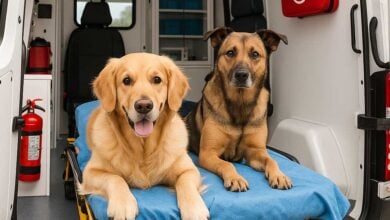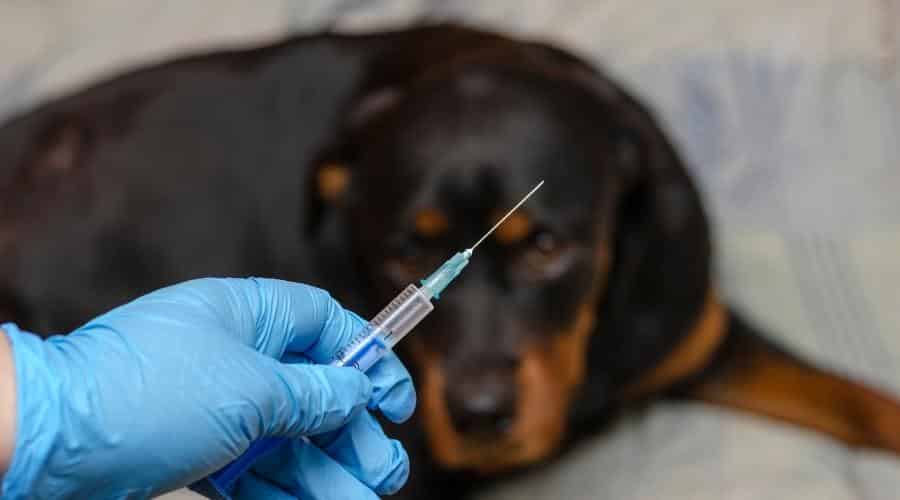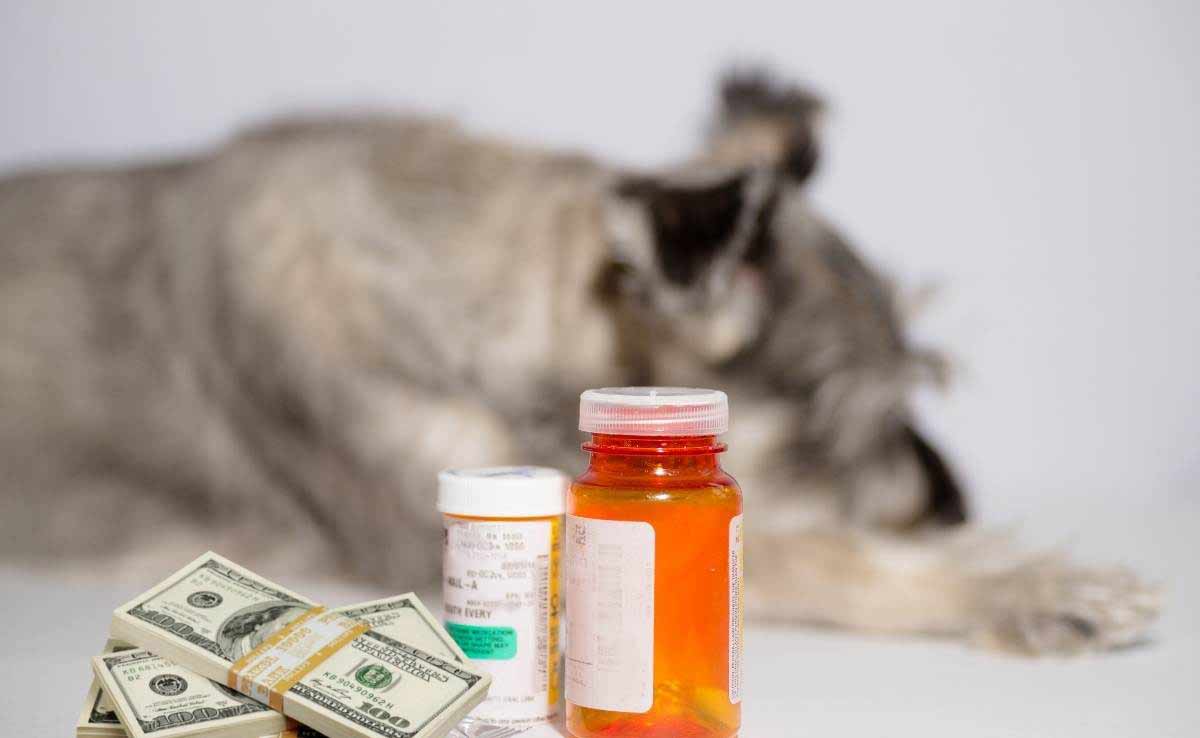Q&A With Embark’s Veterinary Geneticist, Dr. Erin Chu
When you purchase through links on our site, we may earn a commission. Here’s how it works.

This is a Q&A from 2019 with Dr. Erin Chu. At the time of publication, she was a veterinary geneticist at Embark and is a doctor of veterinary medicine, a doctor of molecular genetics from Cornell University, and a dog mom to a Labrador-Shepherd-Chow Chow mix, Shiloh.
Table of Contents
We had some burning questions about Dog DNA tests, and we feel lucky to have found an expert to answer them! We are so thrilled that Dr. Chu took time out of her busy schedule to answer our dog DNA questions and help us better understand how it all works. Read on to learn more about how one becomes a geneticist, how accurate dog DNA tests are, how they differ from humans and much more as we dig deeper into this topic.
What is a veterinary geneticist and what do they do?
I do a little bit of everything! Kind of a Jill of all trades.
I help Embark clients interpret their results, whether they’re trying to see how the breeds we’ve identified have come together to make their unique shelter mutt, or if they’re a breeder trying to optimize the traits or genetic health of their next litter.
I’m a point of contact for our research collaborators. We have a lot of veterinarians, breeders, and scientists who want to use our services to further their science. I’m trained as a molecular geneticist (I am receiving my Ph.D. in molecular genetics this year), so I also help in the wet lab aspect of our work. This involves validating some of our chip* results and optimizing our DNA collection and extraction processes. *The DNA from the saliva sample is extracted and prepared in the lab, then run on the Embark single nucleotide polymorphisms (SNP) chip.
I write educational and medical content featured on our product pages and in our blog. I also represent Embark at veterinary schools, conferences, and hospitals as well as special events such as Animal Planet’s Puppy Bowl 2017, which has been a total blast.
How do you become a veterinary geneticist?
Well, being a veterinarian, being trained in medical genetics, and being ready to seek opportunities in non-traditional veterinary roles, would all fit the bill. From there, it’s what your talents are. Our other veterinary geneticist, Kate Robinson, has a slightly different set of tasks. She’s got more experience with breeders and breed clubs than me, so she works with them far more than me. She was also trained clinically whereas I have a basic science background, so she handles queries of a more clinical nature.
How does dog DNA testing differ from human DNA testing?
It doesn’t really, actually. The difference lies in the population structure of the domestic dog versus the human. Unlike humans, domestic dog breeds have been developed via heavy positive selection for specific traits. For example, the adorable short legs of the Dachshund, or the herding acumen of the Border Collie. At a molecular level, this has resulted in selection for huge stretches of DNA, and has provided each dog breed with their own set of genetic “signatures,” or what genomicists call “haplotypes.”
The cool thing about the dog is that these haplotypes are incredibly extensive. You can imagine that if you’ve selected for a mutation that controls short legs for hundreds of years, you’re also going to bring along all the mutations nearby. That means that one mutation can often predict the sequence of the next mutation because they’re all coming along in one big chunk of DNA. We call this “linkage disequilibrium,” where mutations or genetic variants do not segregate independently of each other.
But going back to how this differs between dogs and humans… Depending on the dog breed, the linkage disequilibrium in the dog is up to 100X greater than a human. That means that with even with a less dense single nucleotide polymorphisms (SNP) chip, we can still identify breed composition as well as a human SNP chip can identify ethnicity. The Embark SNP chip has over 200,000 SNPs (I think some of the human SNP chips have up to five times that). It’d be great to have higher coverage (you can never have too much data!). But because of the unique population structure of dog breeds, we don’t really need it to identify breed with great accuracy.
How specific & accurate is a DNA test when identifying mixed breed dogs?
We guarantee accuracy down to the great-grandparent level (12.5%) but can often get down to about 5% breed contribution. Now, depending on the dog, that could mean “Your dog’s DNA is consistent with having a Chow Chow great grandparent” or it could mean “Your dog probably had a Chow Chow mix for a great grandparent” or sometimes it means “Your dog’s great-grandparent was most likely a mixed breed.” This really depends on how mixed the dog is.
Earlier, I mentioned how the generation of dog breeds has caused large stretches of DNA to be placed under positive selection, generating breed specific “haplotypes.” If you continue to breed a purebred dog to a purebred dog of the same breed, those haplotypes stay intact through the next generation and the next. However, once you start to introduce other breeds into a dog, these haplotypes actually start to break up. It has to do with something called meiotic recombination, which happens every generation in the developing sperm and eggs. During this process, the chromosome that you inherit from your mother and the chromosome that you inherit from your father actually will link up and swap information. This ensures genetic diversity in the next generation and is the reason most of us don’t look like exact replicas of our parents.
In purebred dogs, meiotic recombination happens, but since the two chromosomes are essentially identical, you see very little evidence of recombination. In mixed breeds, the recombination results in a shortening of each ancestral breed’s haplotypes. The shortening will continue with each generation. So if a dog has mixed breed ancestors all the way up the family tree, sometimes the haplotype becomes so short that we cannot uniquely assign it to an individual breed. That portion of DNA is what we at Embark call “Supermutt.” Sometimes we can identify very small contributions (up to 5%) of purebred DNA in a dog’s Supermutt component (if we can, we’ll tell you in your dog’s Trace Breeds), but sometimes we can’t. Learn more about chromosomes in dogs.
How are you able to pinpoint specific breeds in a mixed breed dog?
We compare a mixed breed dog’s haplotypes — length, sequence, and other attributes — to those of known purebreds in our reference panel. This data goes through a series of algorithms that report the likely percentage that each breed contributed to the dog’s unique mix of haplotypes.
Can people use the results from a DNA test to certify a dog as purebred?
No. Remember, we compare a dog’s haplotypes to a reference panel of purebred dogs and ask what percentage of that dog’s haplotypes are unique to one breed or another. We can say that a dog has extreme genetic similarity to our reference Golden Retrievers, even that 100% of their haplotypes match known Golden Retriever haplotypes. But genetics alone does not define whether a dog is “purebred.” Certification of pure breed typically requires a pedigree and registration papers for known purebred parents.
Can you explain what it means if your dog has “wolf” in them?
So, if your dog has a percentage of Gray Wolf in them, that means we actually can identify wolf haplotypes. Meaning your dog has wolf in them. Not an uncommon event.
If your dog has a high “Wolfiness” score, that’s a totally different question. Wolfiness queries a number of SNPs that we know are hypervariable between dogs and wolves. Some of the Arctic breeds, like Siberian Huskies and Alaskan Malamutes, tend to have slightly more of these SNPs than other dog breeds, so Sibes and Mals tend to be around 2-4% Wolfy. We do on occasion get a little dog with like 14% Wolfiness, but that doesn’t mean that they’ve got 14% wolf. It means that they happen to have retained a large number of those SNPs that are more common in wolves than in dogs.
How accurate are results for determining genetic mutations and health conditions?
We use multiple probes for each mutation (thereby ensuring high replicability of results), so for single nucleotide polymorphisms (SNPs, and what a SNP chip is named after), our accuracy really is greater than 99.99%. For structural variants, for example, a huge insertion or deletion of DNA sequence, or a copy number variant where you see four copies of a sequence in one dog and five in another, our accuracy is a bit lower, closer to 99%. In these cases, we are working to integrate other data that inform the first result with an orthogonal approach like this, we up our accuracy to greater than 99.99% again.
Remember though that a genetic result is not a diagnosis of disease. In fact, many of the mutations that Embark screens are known to have incomplete penetrance, meaning even if a dog is “At Risk” for a condition doesn’t mean that it’s a done deal and the dog will develop the health condition.
Video: Dog DNA Test Results & Health
Watch this quick 20-second video which shows a preview of how to see your dog’s health data when viewing Embark’s test results.
What should owners do if certain health condition risks are found?
Talk to their vet, talk to their vet, talk to their vet. Seriously. Embark is a DNA testing company. There is no substitute whatsoever for a clinical evaluation of your dog.
What separates the best dog DNA tests from the rest?
Research grade methodology for breed identification, comprehensive health testing, and the best customer service. Getting all of this information can be a huge shock. We have scientists and vets on call to help you interpret your results and to make sense of all of it.
Also, our dedication to moving canine genetics research forward. Embark’s roots are based in basic science research: It’s where we come from. The vast majority of our clients have opted in to participate in research, meaning the data gathered from our Embark dogs can be used to make new genetic discoveries about our best friends! And because Embark gathers so much data per dog compared to other genetic tests, we’re already digging up a lot of interesting genetic associations!
Where do you see dog DNA testing in the future?
Gosh, I think we’re just seeing the beginning. With the amount of data we’re generating, and the enthusiasm of our clients, I think we’re going to be able to start answering some really important questions for dogs and their humans. What are the genetic risk factors that underlie common cancers, or certain behaviors, or endocrine diseases? Different dog breeds have known predispositions to many of the above.
From there, can we use DNA testing as a clinical tool?
I mean, we already do! Veterinarians already use the dog’s breed as part of the clinical signalment. The beginning of every dog’s case starts with something like: “Harley is a two-year-old female spayed Staffy mix.” Harley is our CEO’s dog and has been swabbed more times than we can count. Naturally, she’s been Embark’d so now, we can actually say, “Harley is a two-year-old female spayed Staffordshire Terrier-Great Pyrenees-Golden Retriever-Australian Cattle Dog mix.” While that’s a bit more of a mouthful, the information there is greater. Great Pyrenees, Golden Retrievers, Australian Cattle Dogs; they all have their own set of diseases and considerations that a vet will start to incorporate into the clinical picture, along with all of the disease and trait information that DNA testing can provide.
Learn more about Embark, including why they are our top pick in our Dog DNA Tests Reviews.



